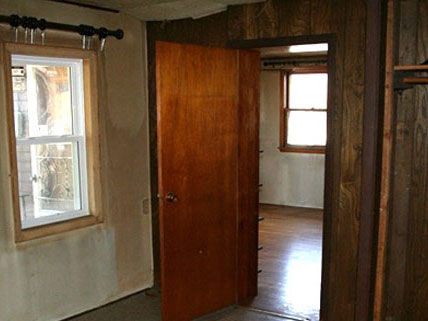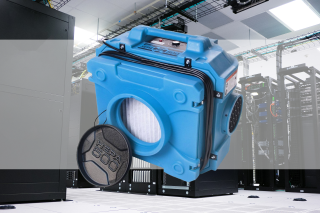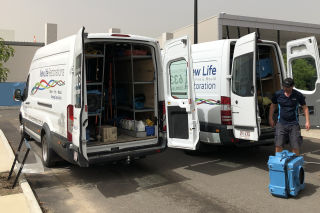How to Remove Cigarette Smell from House
We receive a lot of calls from people wanting to remove cigarette smell from house. In many cases a tenant has smoked in a rental property and cleaners are having a difficult time removing the smell. In this article, we will explain our methodology in removing smoke smell so you can see how the problem is approached from a professional perspective.

1st Step – INSPECTION
We always inspect the property first hand before conducting any type of work. It is impossible to know what process should be used to remove cigarette smell without first analysing the different types of surfaces and contents at the property. At this point we will determine a scope, plan and quote for the removal of the cigarette odour. We will also determine which items are restorable. In this process, we will ask ourselves:
Is the carpet restorable? – Is the carpet overdue for replacement rather than attempting a full restoration clean?
Curtains and drapes – Is it worth restoring or replacing?
Questions like this can only be answered by an experienced technician in fire restoration or by conducting a test. We always make it clear that some residues are not always easily accessible and that time constrains or cost factors may make source removal unfeasible. In this situation, we can resort to using other methods such as oxidizers, counteracts and encapsulants (which we will look into a little later).
2nd Step – SOURCE REMOVAL
This is perhaps the most important step. The aim for cigarette smell removal is always source removal. So this means hard work including, scrubbing, agitation, use of chemicals and heat to remove stubborn oils and stains. Below I will explain how we remove smoke odours.
Curtains Blinds
We clean them in alkaline using our ultrasonic cleaners at our facility (see picture below).Ultrasonic sound waves in the alkaline water physically removes smoke odours. If you don’t have access to an ultrasonic machine, a damp wipe in a pool of cleaning solution with a microfibre blocks should work (see picture to the right). This should be followed by a good rinse.
There are many business out there who specialist in curtain and blind cleaning. If you can drop and pick up these items at their facility, you can greatly reduce the cost of cleaning and restoration of the blinds and curtains.
Carpets
Rotary scrubbing carpet before hot water extraction process. From the pre-inspection we have already determined whether the carpets are restorable. If so, the following method is used below to clean the carpets:
- Vacuuming with commercial upright vacuum cleaner with rotary brush head.
- Alkaline Pre Spray Application
- Carpet Scrubbing with rotary scrubber
- Hot water extraction
- Carpet Dry pad cleaning
Walls
We clean walls with an alkaline wipe with a microfiber block pictured above then a rinse with a separate microfiber cloth (pictured to the right) with water to rinse the residue away. This process can take a long time and a lot of hard work. Persistence is the key in this step of the process. Ensure you have a dirty water bucket and a clean water bucket. The dirty water bucket will have your cleaning solution in it and the clean water bucket is the rinsing solution. Ensure you change the water in these buckets regularly.
Ceilings
Ceilings are painted with a different type of paint to walls. This means that you cannot always use the wet cleaning process as mentioned above or you can cause excessive moisture content. It is recommended you use a test area to see what results you are getting.
If you are not confident with using a wet cleaning process, there is another option using a chem sponge (picture to the right). Suppliers in Australia for Chem sponges include Carpet Cleaners Warehouse, Bennets Direct and Advanced Specialised Equipment.
The chem sponge can be used to wipe the ceilings as a dry process. It can also be used to dry other materials such as books and lampshades.
Air Conditioning Cleaning
Obviously it is important to change or clean the filters from your air conditioning unit. Much of the source of the odour may circulate again after the clean if it is not cleaned. We uploaded a video of our technician Greg explaining how we remove mould from air conditioners. The process for removing cigarette smell is essentially the same.
3rd Step – Odour Control
This step is the final in the cigarette removal process and it may not even be required if the steps above are completed properly. Sometimes it is tempting to bypass the physical removal steps and skip straight to the steps below. However, if you do this, chances are the odours will probably come back. I have listed the different the different odour control processes below.
Oxidizers
“Oxidisers react with fire residues to eliminate their odours. Oxidisers may be applied in gaseous form (ozone)” (Guidelines for Fire and Smoke Damage Repair, RIA, 2007).
The ozone machine we use is pictured to the right. As mentioned above, it can react with fire residues to eliminate odour. Remember, it will not remove the source of that odour. This is why I stress physical removal of the odour.
Basically an ozone machine like this one will be run in the property for a set time releasing ozone into the property. The ozone released by the machine essentially removes odour out of the air space of the property. I would characterise the smell of ozone similar to that of an electrical spark and will usually disipate in a few hours.
Realistically, using an ozone machine is part of the final treatment after physical removal is completed to eliminate any residual odours mostly lingering in the air space.
Counteracts
“A wide variety of products add scents and other materials formulated to modify fire odours or their perception.” It also mentions in the guideline that “counteractants may resolve odour situations where source removal or other processes are not feasible” (Guidelines for Fire and Smoke Damage Repair, RIA, 2007).
Thermal fogging is the usual term used for counteracts used in cigarette odour removal. Basically it is a pairing agent, it is the process of combining a chemical deodorant with the odour to produce a new odorless compound. This is not to be confused with a masking agent which is fragrances (deodorants) used to cover the odour with a stronger odour. Masking agents do not permanently remove the odour.
This process is generally used only as a “supplement to odour removal.” We have found the use of thermal fogging is highly effective after the first steps are carried out.
A word of caution when using this process, you must ensure that you inform the local fire department if you are using thermal fogging as it will literally look like there is a fire the house due to the leaking of fog from the windows and roof of the house. You don’t want the local fire brigade to be called out on a job because someone mistakenly called thinking there was a fire at the house.
Sealers – Encapsulants (Painting)
This basically means sealing in the odour by use of resins, latex, resins or paint. It says in the guidline that “sealers and encapsulants sometimes resolve odor problems that other procedures cannot effectively handle, and also serve as a primer for points.” Not that that it says it will only sometimes solve odour problems, which is why we always push for physical source removal first.
We would generally resort to repainting a cigarette odour affected home only if the above processes does not work.
Conclusion
I hope this gives you a good overview of how professionals approach cigarette smell removal. If there is one thing that you pick up from this article, it is the fact that you must strive for physical removal of the source which involves hard work of scrubbing and cleaning surfaces. The odour control measures mentioned in this article are mostly only effective if the source is removed.
Also a professional company such as us can be engaged to to this type of work. As mentioned, it is important to know how each surface will respond to the different steps above. You may find you will waste time without the relevant experience to clean the property properly. If you would like us to remove cigarette smell from your home, Queensland, Brisbane area please call us on 1300 356 633.
More Information
New Life Restorations Cigarette Odour Removal Services
2nd Edition RIA Guidelines for Fire & Smoke Damage Repair
Institute of Inspection Cleaning and Restoration Certification Fire and Smoke Restoration


